I’m normally not a fan of headlines like this one as they are sensationalist, but in this case it is a reality we must grasp quickly. Frankly, I have been worried about the Ipe market for many years, as global demand rises and saw mills churn out material faster and faster. When you look closely at the Ipe supply chain, you see a house of cards that won’t take much to be knocked over.
Now don’t panic: Ipe is not endangered, nor is it illegal to import. Ipe is still coming into North America, and it will still be available for your decking projects this season. But for the first time in many years, we are seeing a flaw in the armor of the world’s most popular tropical decking. These flaws have coalesced into a serious threat that should have the smart buyer considering possible alternatives for Ipe decking.
Where does ipe come from?
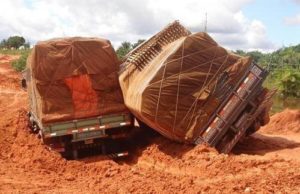 Short answer: Brazil. Long answer: all across Brazil and into many other South American countries. The one thing common to this extremely wide distribution is the rainy season. Each year, sawmills and importers have to juggle the rainy season that essentially shuts down the flow of Ipe. This season is in direct opposition to the hottest demand for Ipe, so shipping has to begin early and all at once in order to meet the entire decking season’s demand.
Short answer: Brazil. Long answer: all across Brazil and into many other South American countries. The one thing common to this extremely wide distribution is the rainy season. Each year, sawmills and importers have to juggle the rainy season that essentially shuts down the flow of Ipe. This season is in direct opposition to the hottest demand for Ipe, so shipping has to begin early and all at once in order to meet the entire decking season’s demand.
This year the rains lasted several months longer than usual, and a severely limited supply of Ipe was exported from Brazil. With new material running a commensurate amount of time behind schedule, the lion share of this year’s Ipe could arrive after the busy deck building season. Knowing this, many importers have cancelled orders, because no one is in a position to buy now and then hold the material on their local yard for more than a year until it sells. Not only will supplies be tight this year, but the end of the season will be downright bleak. Normally, many dealers run low in the fall, but we can expect this shortage to pop up in the middle of the summer now with no relief in sight.
Moreover, what happens to the Ipe that did not ship from Brazil due to the cancelled orders I mentioned above? It will ship whenever lumber mills can, and more than likely, it will get mixed in with new harvests. Expect to see a wider variety of color, grade, and possibly sizes as weathered material will be sanded to remove graying by the elements. Inconsistencies in all of these factors will cast even more doubt on a product whose price is already high.
Tighter Logging Regulations
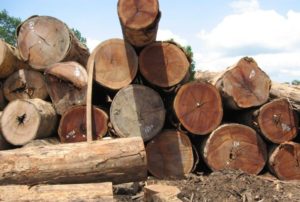
The truth is that there are many people who are buying Ipe which they think has been legally logged, but who may actually be getting something that has, for lack of a better term, been laundered. With many brokers and exporters in the middle, sometimes it is really hard to say where your Ipe actually came from. Unless you import directly, it is very difficult to trace your lumber back to a legal concession that practices sustainable forestry. Moreover, there are many countries on this planet that really don’t care about regulation and sustainability, and they will buy from whomever.
With recent increased crackdown on this activity, those same Ipe buyers still exist, but many of them are now buying legal lumber. That’s very good news, but another way to look at it is that the demand for Ipe just went up dramatically, while the supply was also reduced dramatically. This usually signals a wholesale abandonment of a species.
We have only to look at recent history for evidence of this. Consider Genuine Mahogany and the market crash that resulted when the species was CITES listed. Suddenly, the people who were not willing to pay higher prices and go through greater diligence to certify and verify the sustainability of their Mahogany just dumped the product completely. With less demand and tighter regulation, many mills stopped producing Mahogany altogether. Now the global export of containers of Genuine Mahogany can be counted on two hands.
Please don’t misunderstand me. Regulation like this is a very good thing and it is necessary to protect the species and our forests. But from a market and economic perspective, it is a tough pill to swallow, and it causes many, many tough changes.
One of these changes was the birth of the Ipe market. As South American mills searched for a product to replace Mahogany, Ipe was born, and it changed everything. Well, here we are again, and while Ipe is not CITES listed, one wonders how long until that happens. Traditionally, this is the nail in the coffin for export of that species beyond a niche level.
U.S. Support on the Wane
In the last few decades, many U.S. lumber companies have taken great interest in South American logging and saw mill companies. These companies began to greatly subsidize operations of these mills in order to teach them about sustainable practices, proper sawing and drying, and shipping best practices. Obviously, these companies benefited greatly with the pick of the litter on the Ipe coming from these subsidized companies.
As the South American industry grew and learned to stand on their own with these quality control practices, more and more mills popped up, and the market expanded. Now these U.S. companies stopped seeing the return on their investment as they once were, and they have pulled out completely.
This leaves a lot of mills exposed, and many have subsequently gone out of business. This reduces total availability of the product, but it has also started a kind of Wild West atmosphere; at best, Ipe quality has dropped off dramatically, and at worst, illegal logging has increased and price gouging is rampant.
Now see my point above about the crackdown on illegal logging, and we are seeing even more lumber that is not leaving the country. This Wild West market means that fewer and fewer U.S. and European companies want to do business in South America, and many people are abandoning Ipe as a product (just like Mahogany)
Quality and Price Juxtaposition
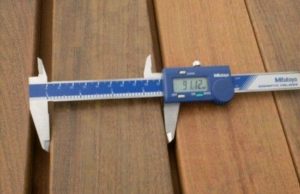
This is creating dissent at the consumer and local dealer levels, and now a product that already has an environmental stigma attached to it is experiencing wholesale abandonment by the users. Whether this stigma is right or not is really besides the point. Ipe is a rainforest wood, and the global consciousness says rainforest wood is bad and should be avoided. Those who are convinced this is not the case buy Ipe, then get disappointed by the quality of the product, and they immediately have buyers remorse.
What really scares me is that with a drop in demand, eventually the Ipe forest will lose value; usually this means the Ipe trees get cut anyway to serve another purpose like making room for agricultural or livestock or even Palm oil plantations. This goes back to the core principle that in order to protect our forests, we need to buy lumber from them. Without this product value, it will be very tough to protect the ecosystem.
Ipe wood sustainability: What Now?

Just know that we at J. Gibson McIlvain are very aware of this problem, and we feel very well positioned with our buying programs in South America to continue to be able to import good quality Ipe in many sizes including 2x and larger structural sizes. However, as this market moves into more niche pricing and availability, even we are taking a larger share of alternate species. We already offer Cumaru or Jatoba decking options in addition to Ipe.
Expect to hear about more species entering the market as an Ipe alternative. Do your homework and consider all the factors when looking at an alternate species. How stable is it? How consistent is the supply and the quality? With a new species or an underused species that is suddenly in demand, there will be growing pains that affect quality and availability. In other words, ask plenty of questions of your suppliers about quality and sustainability and be careful not to jump too quickly into a large position on an untested species.
We feel very strongly about Cumaru and Jatoba as great alternatives to Ipe. Both species are time tested in this climate and very strong and stable. We have been selling Cumaru as a decking product for several years now, and that market – as well as our buying program – is growing dramatically. Jatoba has long been used in the interior flooring industry, and its supply chain is time tested and ready for an increase in demand. Give us a call if you have questions about how these species compare to Ipe and expect to read more about both species here in the coming weeks.
In the immortal words of Douglas Adams,
“Don’t panic!”
None of this is new, and Ipe importers have been anticipating this for years. A healthy market is one that has many choices and competitors. Ipe has taken monopolistic control of tropical decking for a few years, and it is time for that to change. This change will only create a better market (and a healthier rain forest) in the long run.

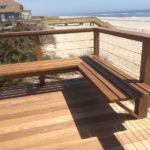
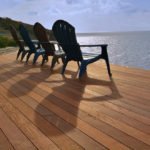
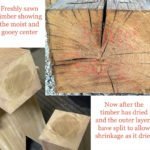
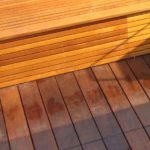
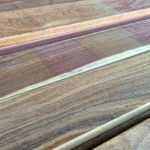
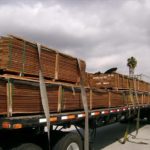


Good information on this website – Thank you. Can you recommend the gap between boards – on decking for IPE 5/4″ x 6″ boards? I am located in SW Ohio.
John, check our article that addresses the gap between boards question exactly. Frankly 1/4″ is a good number to go with in any situation but some people really like to make the gap as small as possible so 1/4 won’t work in that case. While your location, and sun exposure, play into the equation, I think the more important factor is when you install the decking. Knowing where the board is in its annual expansion and contraction is the single most important thing in getting that spacing right.